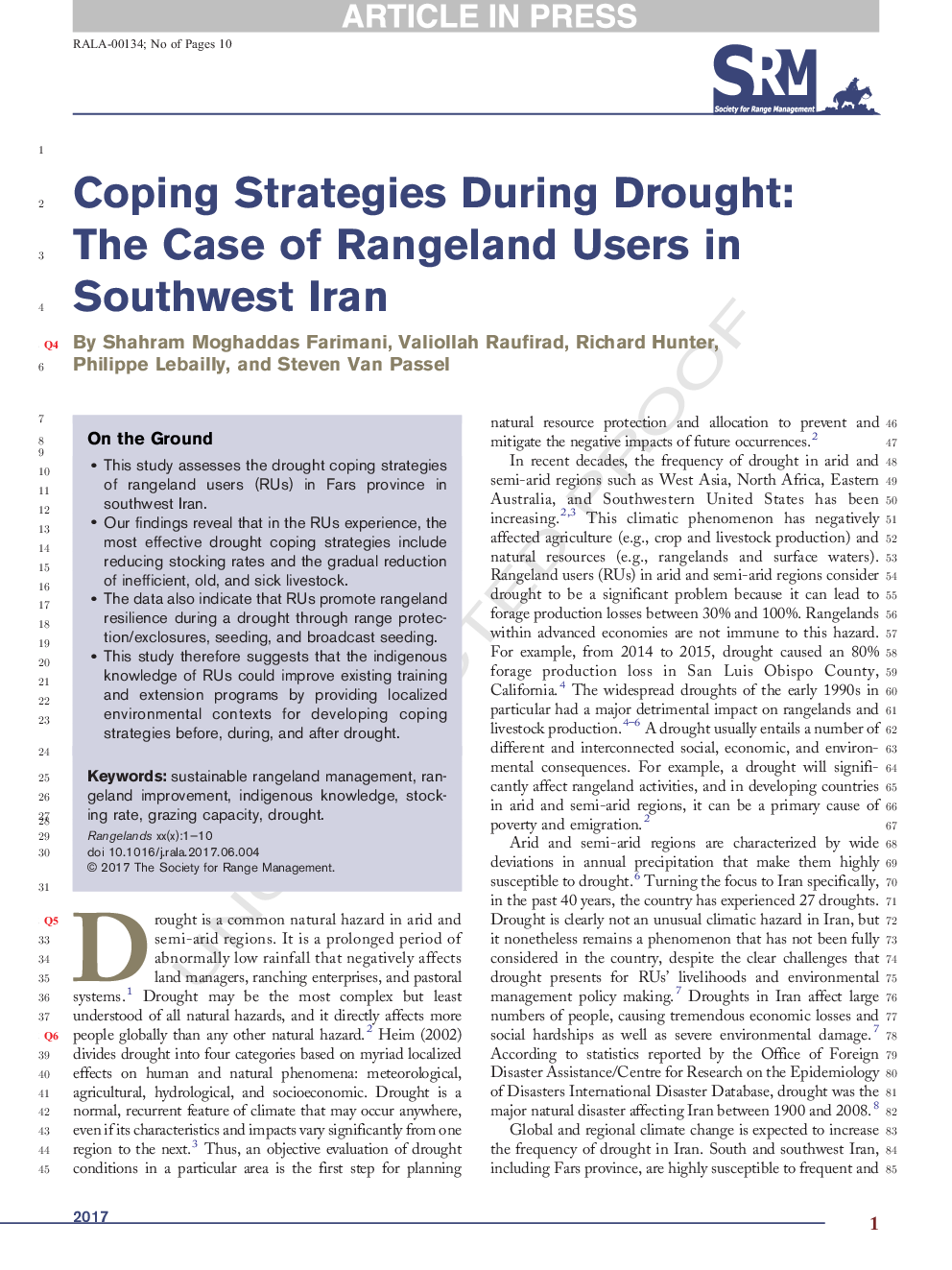| Article ID | Journal | Published Year | Pages | File Type |
|---|---|---|---|---|
| 8849692 | Rangelands | 2017 | 10 Pages |
Abstract
On the Ground
- This study assesses the drought coping strategies of rangeland users (RUs) in Fars province in southwest Iran.
- Our findings reveal that in the RUs' experience, the most effective drought coping strategies include reducing stocking rates and the gradual reduction of inefficient, old, and sick livestock.
- The data also indicate that RUs promote rangeland resilience during a drought through range protection/exclosures, seeding, and broadcast seeding.
- This study therefore suggests that the indigenous knowledge of RUs could improve existing training and extension programs by providing localized environmental contexts for developing coping strategies before, during, and after drought.
- This study assesses the drought coping strategies of rangeland users (RUs) in Fars province in southwest Iran.
- Our findings reveal that in the RUs' experience, the most effective drought coping strategies include reducing stocking rates and the gradual reduction of inefficient, old, and sick livestock.
- The data also indicate that RUs promote rangeland resilience during a drought through range protection/exclosures, seeding, and broadcast seeding.
- This study therefore suggests that the indigenous knowledge of RUs could improve existing training and extension programs by providing localized environmental contexts for developing coping strategies before, during, and after drought.
Related Topics
Life Sciences
Agricultural and Biological Sciences
Agricultural and Biological Sciences (General)
Authors
Shahram Moghaddas Farimani, Valiollah Raufirad, Richard Hunter, Philippe Lebailly,
